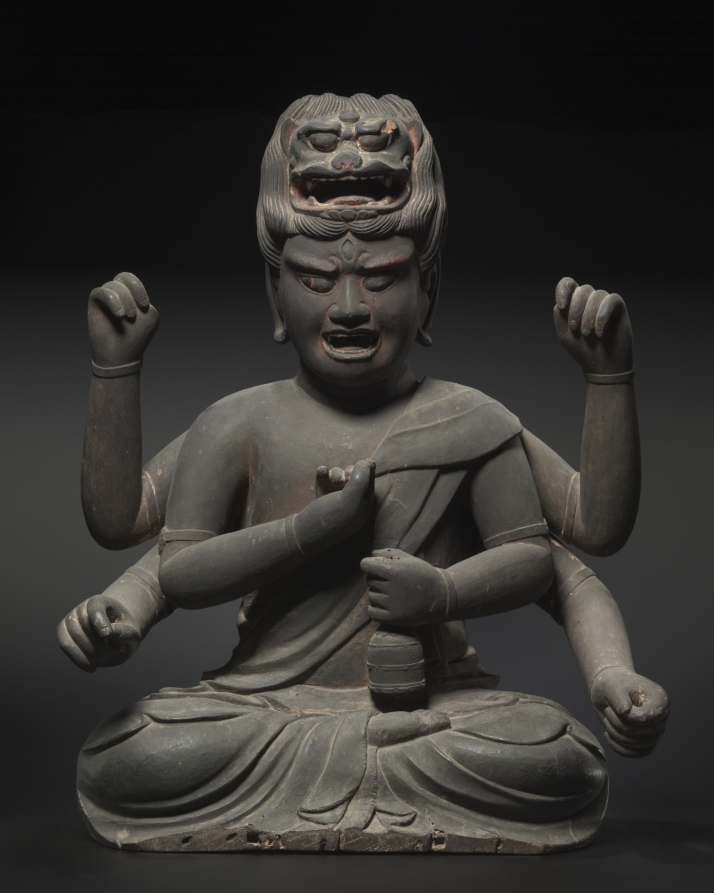| schema:description 10 | "creditline: Bequest of Elisabeth M. Skala" |
| schema:description | "current_location: 235B Japanese" |
| schema:description | "culture: Japan, Kamakura Period (1185-1333)" |
| schema:description | "wall_description: The Buddhist deity Aizen channels carnal desire into a lust for spiritual enlightenment, and is an appropriation of the Hindu deity Rāgarāja. In its principal right arm this figure once held a vajra to cut through illusion, while its main left arm still grasps the vajra bell rung to bring one to awareness. The other arms grasped a lotus bud symbolizing the power of the Buddhist teachings, and a bow and arrow, borrowed from Kama, the Hindu god of love. The lion’s head in Aizen’s hair holds its mouth open so that it may be fed thoughts and desires. Traces of the red pigment that covered the deity’s body remain. Holes along the front of the legs show where the sculpture’s base, a lotus pedestal placed upon an urn spewing wish-fulfilling jewels, would have been attached....(more)" |
| schema:description | "type: Sculpture" |
| schema:description | "collection: Japanese Art" |
| schema:description | "id: 153662" |
| schema:description | "tombstone: Wisdom King of Passion (Aizen myōō), 1300s. Japan, Kamakura Period (1185-1333). Wood, with black lacquer and red pigments; overall: 75 x 59 x 35 cm (29 1/2 x 23 1/4 x 13 3/4 in.). The Cleveland Museum of Art, Bequest of Elisabeth M. Skala 1987.185...(more)" |
| schema:description | "technique: wood, with black lacquer and red pigments" |
| schema:description | "measurements: Overall: 75 x 59 x 35 cm (29 1/2 x 23 1/4 x 13 3/4 in.)" |

